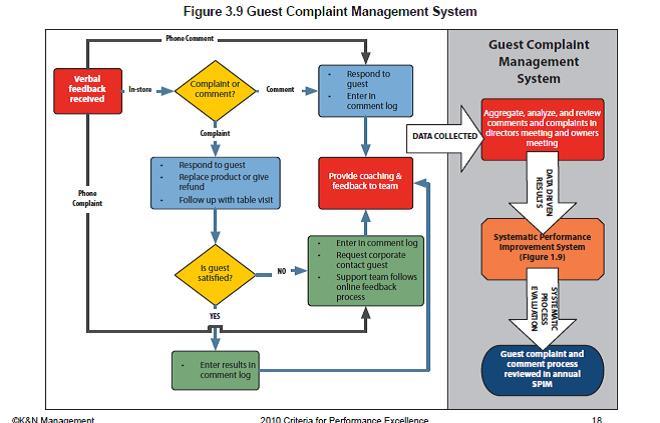Blogrige
The Official Baldrige Blog

Graphic used with permission.
In a recent blog, “Emotional Hijacking: Why Logic Doesn’t Work with Angry Customers,” Gallup Senior Strategist of Customer Experience and Innovation John Timmerman provides considerations that organizations can use both to prevent and manage customer complaints.
Timmerman also shared with us the science behind his blog, noting “Customers experience ego depletion (inability to use rational judgment) because the amygdala (part of the brain that controls emotions) can freeze up the logical functions of the brain. This becomes more exacerbated because the amygdala is triggered by an aversion to loss such as a customer perceiving they are at the losing end of the equation. The perceived loss of not receiving fair treatment can trigger the amygdala which overrides rationale thinking and puts emotions in full control of behavioral response.”
Illuminating the futility of some responses to angry customers, Timmerman added, “The ego depletion increases as employees try to use rational responses when the customer is only tuned into an emotional channel. The fatigue of ego depletion becomes worse as the customer is handed off to other people and escalates into a full emotional hijacking.” For organizations to avoid such situations, Timmerman’s blog lays out “six rules to prevent emotional hijacking.”
Such insights complement information that the Baldrige Program makes available on national role-model organizations that have developed strong customer-focused processes—and thus reaped beneficial results in the areas of customer satisfaction and engagement (item 7.2 of the Baldrige Criteria).
For example, 2010 Baldrige Award recipient K&N Management (profile linked as PDF file) has achieved results in its restaurants that demonstrate that it has long recognized the importance of building strong customer relationships. The Texas-based small business has systematic processes for serving customers’ needs to engage them and build relationships (item 3.2 in the Baldrige Criteria). Those processes include both preventative practices and immediate and effective management of complaints if and when a customer has indicated dissatisfaction.
As the organization stated in its 2010 Baldrige Award application (publicly available on the Baldrige website), “The food service industry demands fast resolution to guest dissatisfaction.” K&N Management described its process for managing complaints in part as follows, “Most of our complaints are submitted while the guest is still in the store, thus we have implemented a process to quickly handle and satisfy guest complaints when submitted at the store level. Verbal in-store comments and complaints are largely handled by [team members] and managers who are trained and empowered to delight the guest through hospitality and quality control. In-house complaints are processed initially by [team members] by replacing product that does not satisfy the guest.”
K&N’s approach to managing complaints appears to align with scientific insights conveyed by Timmerman. To wit, its restaurant employees “are fully trained on guest delight during training and are coached to personally take ownership of any guest complaint and resolve it based on verbal and non-verbal cues from the guest.” K&N’s complaint management system is depicted in the graphic in this blog.
“Our goal is not just to resolve the complaint and make whatever is wrong right, but to go a step further and create a delighted guest by turning a negative into a positive,” said K&N Management Co-Owner Ken Schiller recently. “Doing this builds relationships and creates long-term raving fans. Our team members know we will recognize and reward their actions in achieving this result and they will never be reprimanded for doing too much to delight a guest.”
Readers: How do people in your organization address angry customers? Do you have a systematic approach for building customer relationships that creates “long-term raving fans”?
About the author
Related Posts
Comments
- Reply





